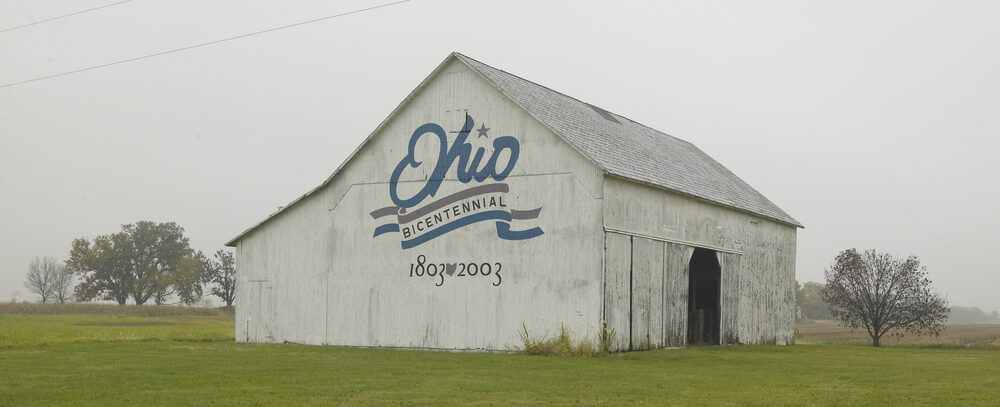Like most of its Midwestern neighbors, Ohio is one of the most active agricultural states in the U.S. As such, it is also among the leading states in the country when it comes to the use of a common weedkiller, glyphosate, better known as “Roundup.”
More than 100,000 lawsuits have been filed across the country, including here in Ohio, alleging that the most popular weedkiller in history causes a rare form of cancer.
So far, three juries have awarded a combined $2 billion in damages to a total of four plaintiffs. Bayer, the company that makes Roundup, has made a settlement offer of about $10 billion to end the existing cases, and another $2 billion for future lawsuits over their product.
In addition to being widely used in farming, Roundup is popular for homeowners to control weeds and vegetation around their properties. It is also widely used by cities, towns, and counties to kill weeds in public spaces.
What should Ohio residents who use Roundup know about the potential health risks of this herbicide, as well as their legal rights to seek compensation for damages they’ve suffered?
What Does Roundup Do?
Roundup is the brand name of a herbicide that uses glyphosate as its active ingredient. Before it was discovered to be an effective weedkiller by a Monsanto scientist, glyphosate was primarily used as a de-scaling agent in the commercial plumbing industry.
This non-selective herbicide works to kill plants by attacking the production of an enzyme that’s necessary for plant growth. Monsanto, which was acquired by Bayer in 2018, has long maintained that the lack of this enzyme in humans and other mammals means that glyphosate is harmful only to plants.
Since 1974, more than 3.5 billion pounds of glyphosate have been used in farming and for commercial and personal uses in the United States, according to a study published in a European science journal. In the Ohio agricultural community, glyphosate is widely used to control weeds and ensure high crop yields. U.S. Geological Survey (USGS) usage estimates indicate that about 8.1 million pounds of glyphosate were used on Ohio farms in 2017, which ranks No. 11 among all states.
Glyphosate Usage in Ohio
- Since 1992, nearly 139 million pounds of glyphosate have been applied to Ohio farm fields.
- Ohio ranks No. 11 nationally for glyphosate use in agriculture (8.1 million pounds in 2017, the most recent year for available data), just ahead of California (7.8 million pounds).
- Glyphosate is the most commonly used herbicide or pesticide in Ohio agriculture —more than double its leading competitor.
- Soybeans accounted for about 72% of the glyphosate used in Ohio farming in 2017, with corn accounting for another 27%.
- An estimated 263 million bushels of soybeans were produced in Ohio in 2020, the seventh-highest yield in the country, while Ohio farmers produced 554 million bushels of corn, ranking the state No. 8, in terms of output.
Is Roundup Dangerous?
The answer to whether Roundup is a dangerous product depends on whom you ask. While it’s considered safe for use by the U.S. Environmental Protection Agency, other regulatory and health groups do not see it that way. Three juries so far have said Roundup, indeed, causes cancer.
In Ohio, glyphosate use has fallen in recent years, though this can hardly be called a significant trend. While use of the weedkiller fell between 2016 and 2017, it rose by nearly 14% in Ohio between 2010 and 2017.
Juries in three trials have awarded upwards of $2 billion in settlement money, and in many places, use of Roundup is banned or highly restricted. For example, glyphosate is banned in Mexico, Vietnam, Luxembourg, and Thailand, and many cities and towns across the U.S. have similarly banned its use.
Why are so many people calling Roundup’s safety into question? At the heart of these lawsuits and efforts to prohibit the product are connections that have been made between glyphosate and non-Hodgkin lymphoma (NHL), a form of cancer.
All three trials that have proceeded to jury verdicts thus far involve people who used Roundup and were later diagnosed with NHL, which accounts for an estimated 4% of all cancer cases in a typical year.
Roundup and Non-Hodgkin Lymphoma (NHL)
The primary signs and symptoms of NHL vary depending on how advanced the cancer is. But for those who used Roundup and are concerned about their health, here is what to watch out for:
- Chills
- Swollen lymph nodes
- Swollen abdomen
- Fatigue
- Chest pain
- Weight loss
- Shortness of breath
- Unexplained swelling
- Easy bruising
- Fever
- Cough
- Frequent, severe infections
- Night sweats
The American Cancer Society projects that about 82,000 Americans will be newly diagnosed with non-Hodgkin lymphoma in 2021, and about 21,000 people will die from it. Population-adjusted rates have climbed slightly over the past few decades.
While survival rates for non-Hodgkin lymphoma are high (about 73% in the earliest stage), like most other forms of cancer, early detection is key. If NHL is not discovered until after it is spread throughout the body, five-year survival rates fall to about 57%.
In addition to jury verdicts that connect glyphosate and Roundup to cancer, multiple studies have concluded that the weedkiller causes or contributes to cancer. A University of Washington study in 2019 found that exposure to glyphosate-based weedkillers increases a person’s risk for NHL by more than 40%. Furthermore, the International Agency for Cancer Risk began listing glyphosate as a probable carcinogen in 2015, and the California Office of Environmental Health Hazard Assessment also lists the chemical as carcinogenic.
Even the U.S. Environmental Protection Agency, which as recently as 2020 said that glyphosate does not cause cancer, at one time listed the chemical as a potential carcinogen. Between 1985 and 1991, the EPA said glyphosate was a Class C carcinogen before reversing course.
If you show any of the above symptoms and believe that you may have developed NHL as a result of exposure to Roundup, you should immediately seek medical treatment.
What Is the Current Status of Roundup Litigation?
So far, three trials over the connection between Roundup and cancer have gone to trial, and all three have ended up in jury verdicts in favor of the plaintiffs. Jury members in these cases have been so convinced of the connection between Roundup and cancer and of Monsanto’s conduct in concealing the risks of the product that they have awarded the plaintiffs upwards of $2 billion combined in damages.
Those awards were later reduced on appeal, but the verdicts themselves have held up. While none of the plaintiffs have seen any money yet from those cases, Bayer is eager to put an end to the 100,000-plus lawsuits pending. In 2020, the company came out with a $10 billion preliminary settlement offer.
They further proposed to set aside an additional $2 billion for future cases. While negotiations of both settlements are ongoing and nothing has been finalized, considering the high value of the jury verdicts, for many plaintiffs and potential plaintiffs, the proposed settlement figure pales in comparison.
Labelling Settlement
Separately, Monsanto has agreed to pay $40 million to settle cases over misleading labeling of Roundup that caused people to purchase the product based on their belief that it could not possibly harm humans or animals. This proposed settlement has been approved in Ohio, and consumers who apply can receive up to about $90 if they purchased Roundup after Feb. 13, 2015.
How Much Can I Get From a Roundup Lawsuit in Ohio?
Until any proposed settlements are finalized, it is not easy to say how much a Roundup lawsuit could be worth in Ohio. However, all three of the cases that have gone to trial so far have ended up in eye-popping jury awards, ranging from about $300 million to $2 billion. All those cases have seen award amounts slashed on appeal, and none of those plaintiffs have received money since Bayer is still in the appeals process.
However, when it comes to the potential $10 billion settlement that remains in negotiations, we do have some indication of what the 100,000 plaintiffs can expect in Ohio and across the country. The average payout would be about $165,000, but some people would see more.
Several factors are expected to affect the potential payout people could receive, including:
- To be eligible, a person must be a U.S. citizen diagnosed with non-Hodgkin lymphoma who used Roundup for at least a year prior to being diagnosed.
- Points will be awarded based on the age at diagnosis and how advanced the cancer is.
- Families of people who have died will receive the most points.
- Survivors of people who died before 2009 will receive fewer points if the deceased had no surviving spouse or minor children.
What Should I Do if I Have Been Affected by Roundup?
If you’re an Ohio resident who used Roundup as part of your job or to control weeds around property you own and were later diagnosed with non-Hodgkin lymphoma, you may be eligible to receive financial compensation. To be sure you get everything you’re entitled to, you should contact an expert class-action law firm in Ohio. We can help connect you to the relevant legal experts.
With Ohio’s agricultural and environmental history, many law firms and attorneys in the state are well-versed in the complexities of class actions and multijurisdictional litigation. Best of all, when it comes to most Roundup cases in Ohio, you will not be expected to pay legal fees unless you win your case, and consultations are often free.





